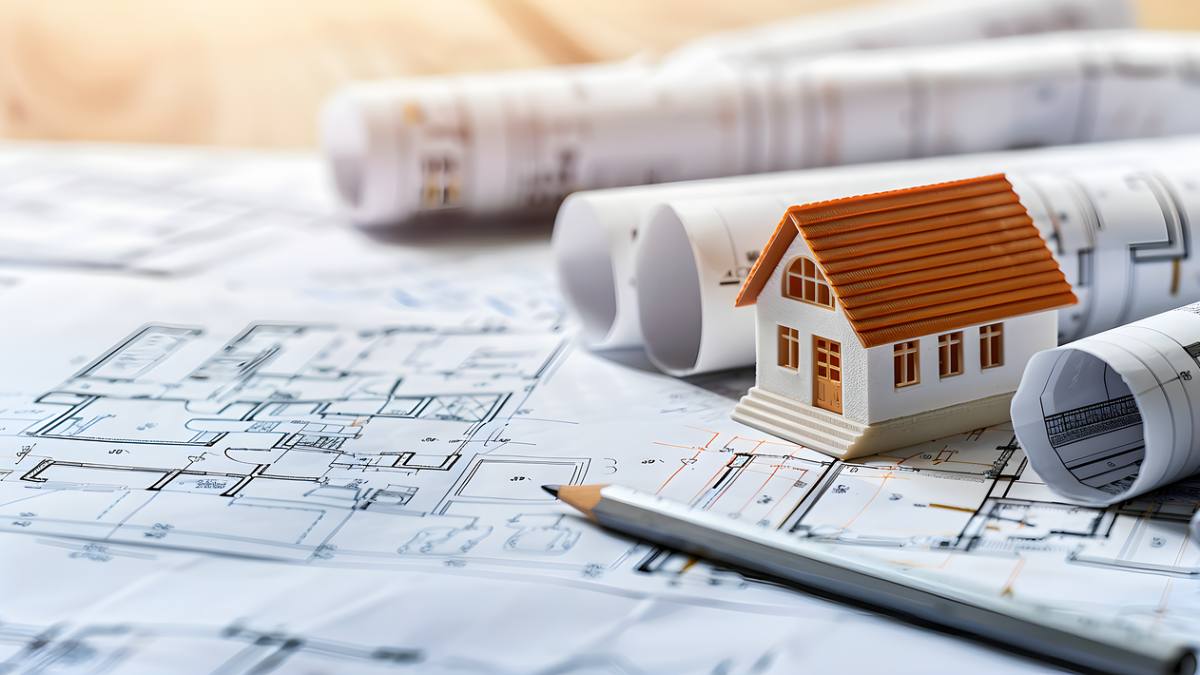
Keep Your Home in Top Shape With This Seasonal House Maintenance Checklist
If your household has invested in a seasonal house or vacation home, you’ll still need to take the time to ensure you’re maintaining it properly, especially if your property is located in a region where four seasons occur. Anytime you’re taking care of a seasonal house, you’ll also want to become familiar with your surroundings, temperatures, and potential natural disaster risks. When you know what to expect as each season arrives, you can tend to the maintenance your home is likely to require at some time or another.
Spring Maintenance

If you’re charged with taking care of the seasonal house in your family, and it’s springtime, you’ll need to conduct a few spring maintenance tasks to ensure your home is fully prepared for the warmer months of the year. Whether you intend to take care of the gutter cleaning on your own or if you’ve discovered a leaky roof, there are plenty of areas in and around the home that need to be taken care of as the spring rolls in.
Roofing and Gutters
Inspecting your roof and taking care of your seasonal house’s gutters is highly advisable once spring begins to arrive. This is especially crucial if you aren’t always on the property of your seasonal home to monitor the roof during heavy rains and storms. Inspecting your roof will determine if it requires any additional maintenance, such as flashing repair, or if you require new shingles due to missing or damaged shingles that are currently in place.
HVAC System Preparation
You will also need to take the time to inspect your HVAC system. This is vital if you live in a region where the temperature gets warm or even hot. If your seasonal home has an HVAC system, conducting an inspection of your own, changing filters, or even working with an HVAC maintenance company can help significantly. Ensuring your HVAC system is cleaned and functioning properly matters if you’re determined to extend its lifespan as long as possible as a homeowner or investor.
Foundation
Inspect the foundation surrounding your home as the spring arrives, especially if your seasonal property is located in a region where heavy snowfall was recently present throughout the winter. When inspecting your seasonal home’s foundation, take note of any potential signs of settling. You’ll also want to monitor any potential cracks to determine the severity of the cracks themselves before conducting any other major renovations in or around the home itself.
Replace Window Screens
Another way to prepare a seasonal home for the summer time is to do so in the spring by replacing, updating, and upgrading windows along with any outdated, ripped, or missing screens throughout the home. Adding and securing new screens surrounding the windows of your home will minimize the risk of a pest infestation while allowing you to keep your windows open once the temperature is comfortable for you outdoors. You can also take this time to invest in any pet-friendly screens you may need to prevent scratches and the ruining of screens if you decide to open your windows with pets in the home.
Chimney Inspections
If your seasonal house has a chimney, you may also want to inspect it once the snow has melted and the green grass begins to grow again. Inspect your home’s chimney for clogs, pests, and even blockages that may prevent it from working properly, causing the buildup of smoke and potentially noxious gasses. If you’re unable to inspect a chimney on your own, you can also turn to professionals who specialize in residential chimney inspections near you.
Summer Maintenance

When it comes to taking care of your seasonal house properly, regardless of the time of the year, there are a few tasks that you may need to tend to during the summer. This is especially important if your secondary or seasonal home is located in an area where temperatures are extremely hot during the summer or even life-threatening. From investing in cooling pillow cases to routine air conditioning maintenance, there are a few ways to go about maintaining a second seasonal home for the summer just about anywhere in the world.
Maintain Your Sidewalk, Pavement, and Driveway
Anytime you’ve invested in residential property with a driveway, patio, surrounding pavement, or attached sidewalks, you’ll need to take care of the material throughout the year. Whether you are using asphalt or concrete, maintaining the sidewalks, walkways, and driveway of any home is imperative, especially after you’ve lived in the location for many years. When the summer arrives, it’s advisable to take some time to inspect any walkways or driveways attached to your lot for bulging, cracks, or holes.
Investing in the maintenance of your home’s driveways, sidewalks, and cracks, is always advisable whether you’re planning to keep your seasonal home in the family or if you want to maximize profits and ROI once you list it for sale. Repairing the cracks, holes, and bulges of a driveway or sidewalk will drastically improve your home’s curbside appeal and may also add value to the property, depending on the work you complete and where you’re located. You will also reduce the liability risks associated with cracks in sidewalks and driveways that can lead to lawsuits from a slip and fall accident by paying close attention to the asphalt and concrete that surround your home year-round.
Maintain Your Patio or Deck
If your seasonal home has a deck or patio, you’ll want to ensure you’re maintaining it properly, especially as the warmer seasons arrive. Taking the time to clean any debris, dirt, and clutter from your deck or patio is a great place to begin. You can then consider re-staining your deck or sealing it for the year, depending on its age, materials used, and how you intend to use the patio or deck with your friends and loved ones.
Take Care of Your Garage
During the summer, once it’s warmer outside, you’ll likely find the urge to spend more time outdoors in nature to be more present. Taking care of your garage is a great way to take advantage of the energy you have when it comes to going outdoors and paying more attention to the exterior of your home. Removing clutter that you no longer want or need in your garage will free up plenty of more space to work and build in while the weather is warm and enjoyable outside.
Inspect for Pests
Depending on where your seasonal home is located, inspecting for pests is always recommended. Pest infestations can happen year-round, but they’re more likely to occur during the shift of a season, such as spring into summertime. If you want to mitigate pest infestations or learn more about the pests that are in your area, conducting a thorough inspection is highly advisable, regardless of the size and location of your home.
Monitor for Signs of Water in the Basement
Once spring and summer months arrive, you’ll also need to take note of potential water damage or standing water that takes place after a heavy rain or major storm (dependent on your location and region). Some homes are more prone to basement leaks and floods, often due to a lack of waterproofing or the location of their home itself. Be sure to monitor where water is coming from to determine the root cause of the issue if you’re experiencing flooding or standing water in the basement of your seasonal home this spring or summer.
Fall Maintenance

When it comes to taking care of your seasonal house, it’s also just as important to do so during the fall or autumn. Whether you’ve decided you already require a chimney cleaning or if you’re interested in professional handyman services, you’ll need to know how to best optimize your home for the colder months before it becomes too cold or below freezing outside. From cleaning up outdoor leaves and debris to inspecting windows and HVAC systems, there are plenty of areas that need to be maintained when you own a seasonal home that experiences autumn and winter.
Inspect Siding
Inspecting the siding of your seasonal home is also ideal during the autumn as the colder air begins to circulate. When you’re inspecting your home’s siding, check for cracks, openings, and other areas of concern. You can then work with a professional siding contractor or local exterior company to repair any minor damage before the winter.
Winter Maintenance

If you want to protect your seasonal house year-round, you can’t neglect it during the winter, especially when it comes to routine plumbing maintenance and, in some cases, even electrical lighting services. Preparing a home during the winter will vary widely based on your home’s regional climate and location. From testing smoke detector batteries to inspecting pipes to prevent freezing, it’s imperative to prepare any seasonal home you own for the upcoming winter.
Inspect and Clean Dryer Vents
Inspect and clean the dryer vents that surround your home before winter arrives. This will reduce the risk of a potential fire anytime you’re using your dryer, and it collects lint. Inspecting the dryer vent before major snowfalls will also make the process a bit easier.
Replace Batteries
Replace the batteries of any carbon monoxide and/or smoke detectors you have installed throughout your seasonal home before the coldest months of the year come. Replacing batteries regularly will prevent you from missing warning beeps if you don’t spend all your time in your seasonal home during the year. Ensuring properly working batteries in your detectors will minimize the risk of life-threatening injuries or fires.
Clean Snow Frequently
Remove snow frequently from driveways and walkways that surround your seasonal home to prevent the snow from becoming too deep. If possible, you may also want to clear any snow that’s accumulated on your home’s roof, even if you need to do so with the help of professional roofers. Cleaning snow frequently or hiring a local professional or service to help when you’re unavailable is always advisable for those who own a seasonal home in a region where plenty of snow is likely.
Bonus Tips for Year-Round Maintenance
When it comes to taking care of your seasonal house, there are a few bonus tips to keep in mind. From hiring a local house cleaning service to working with pest and HVAC professionals, knowing who to turn to regardless of the time of year is key to ensuring the protection of your seasonal home year-round.
Hire Pest Professionals
Choosing to hire a pest control company is one of the best ways to guarantee year-round pest maintenance for your seasonal home. This is especially ideal for those who own seasonal homes but are unable to perform routine maintenance or inspections on their own. A pest professional can also help with preventative maintenance to keep pests from making your seasonal home a target at any point during the year.
Hire a Cleaning Company
Working with a professional cleaning company is another way for you to take care of your seasonal home, even if you aren’t in it frequently. A cleaning company will assist with routine cleaning tasks without allowing dust to buildup or cause damage to the interior of your home. Hiring a local cleaning company will also allow you to preserve your seasonal home in its original condition.
Replace HVAC Filters Regularly
One way to take care of a seasonal home more efficiently is to learn more about your home’s existing HVAC system and its filter replacement needs. Inspecting your HVAC filter regularly and changing its filters will extend its lifespan and improve its overall efficiency. The more efficiently your HVAC system runs, the less energy you’ll require to heat or cool your home, reducing your energy bills along the way.
Taking care of your seasonal house is just as important as paying attention to any primary home or property you own, especially if you intend to keep the seasonal home for decades to come. When you’re aware of what to expect, typically, each season, you’re less likely to encounter major issues, system breakdowns, or expensive and unexpected repairs. The more proactive you are when it comes to taking care of your seasonal house, the lighter the burden will be on you financially and when it comes to maintenance services.



